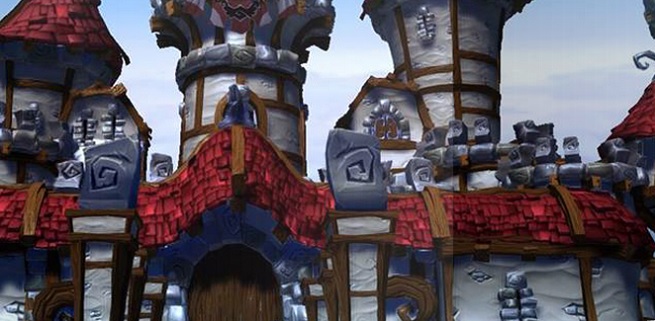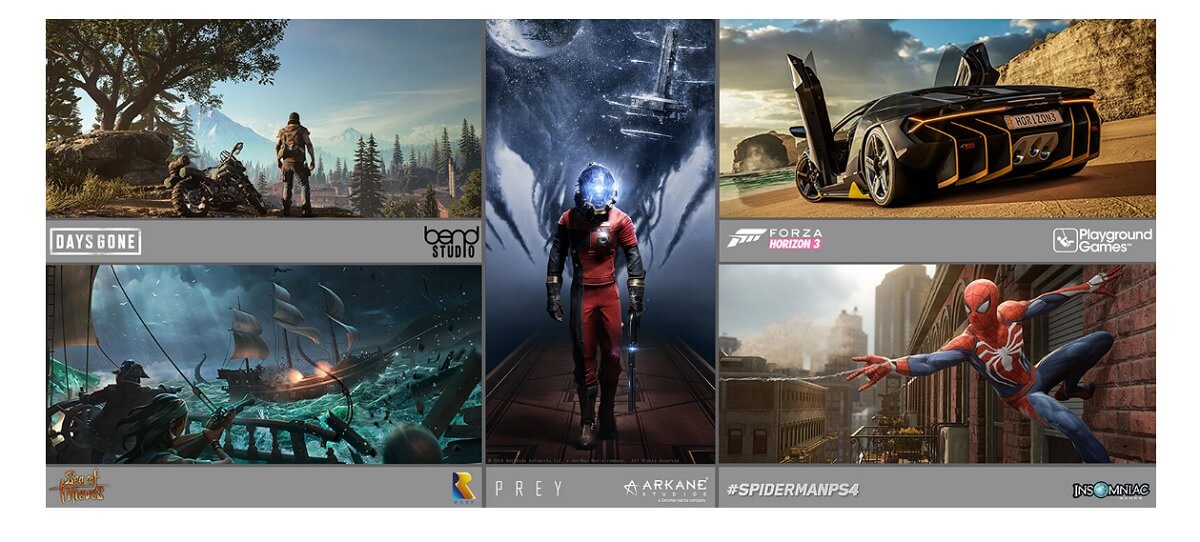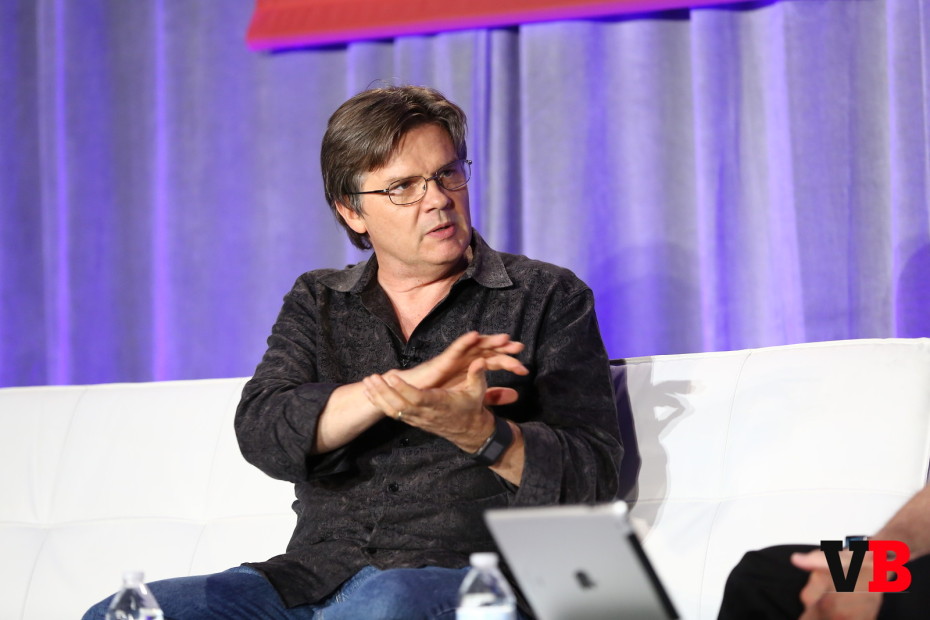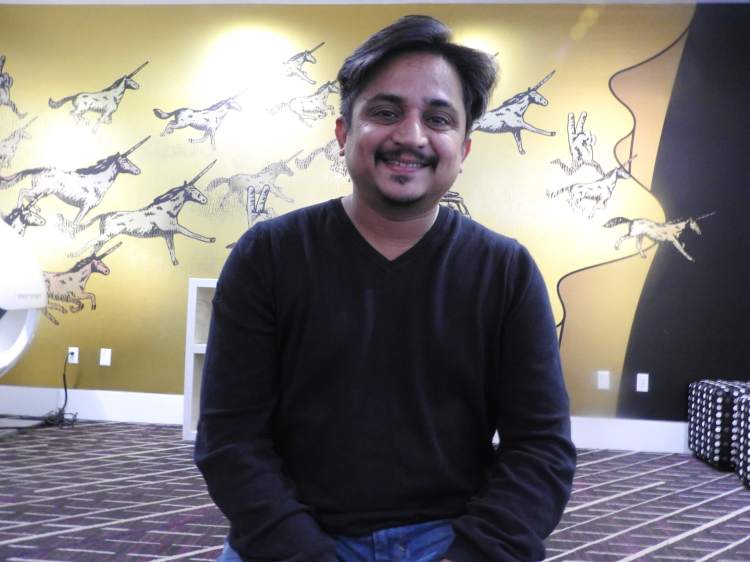Rajesh Rao is one of the founding fathers of India’s game industry. He started Dhruva Interactive in Bangalore almost 20 years ago.
Dhruva was a pioneering company that went through various cycles. It started with work-for-hire, making games for the French game company Infogrames. Then it began making cars for Microsoft’s Forza Motorsport games. Dhruva also made original games for the Indian market and started an incubator for Indian game startups.
Rao helped start the NASSCOM game event, which has become India’s largest game conference. And during all of that time, India’s game market is starting to mature, particularly with the fast growth of the country’s smartphone business.
Rao recently sold Dhruva to Swedish game publisher Starbreeze for $11 million. We met once again at the Game Developers Conference last week in San Francisco.
Here’s an edited transcript of our conversation.

Above: Dhruva worked on Microsoft’s Project Spark
GamesBeat: How long has it been since the acquisition?
Rajesh Rao: The deal was announced at the end of December. It’s not closed yet because of regulatory issues in India. It’s a minor formality. It’ll happen in the next month or so.
GamesBeat: When did you start the company?
Rao: In one week it’ll be 20 years.
GamesBeat: What was the gaming environment like back then?
Rao: There was nothing. We were excited at the thought of getting into games, but there was no business, no market justification. This was in Bangalore.
GamesBeat: What made you want to do it?
Rao: I was kind of a geek, a programmer. I finished my engineering schooling. My final project was in multimedia. I’d actually written my own multimedia engine. I used that as a way to start my own multimedia company in 1995. We were fairly successful. Again, we were probably the first multimedia company in India as well, doing custom solutions for companies. We were doing things like point of information terminals, computer-based training modules, touchscreen-based stuff. The early days of multimedia.

Above: Rajesh Rao discusses the challenges of the Indian mobile gaming market at GamesBeat 2015.
GamesBeat: Not anything game-related at that point?
Rao: No. Then, in February of 1997, we bumped into an evangelist from Intel. They were evangelizing the upcoming Pentium II, and they were looking to sign up companies that were willing to do code for that chip. Pentium II was a breakthrough chip for games. It had the AGP port and a lot of other gaming-friendly features on the chip. We signed up to do a rendering engine for the Pentium II. That’s how we got into games. The guy showed us Shiny’s old game, MDK, and said, “Look at this, this is huge. You guys are doing multimedia and this is even better.” That’s how we signed up. We were quite excited. They did a great job of selling the story to us.
We signed up for what Intel called the early access program. They had an early access technology program. They’d give us the prototype chips and computers and help us with tech support. If we needed to talk to people on the DirectX team at Microsoft, they would facilitate that. They would do things like matchmaking events, where they’d showcase people like us to potential partners.
GamesBeat: How did the games start growing for you?
Rao: It took us a year to build our engine. We sustained the business with our pre-existing multimedia work. I traveled to E3 for the first time in 1997, in Atlanta, and realized how big the games business is. I came back and said, “We have to have something really awesome to show. This business is not about cost arbitrage. It’s not about an Indian services company coming in and selling. You have to be really good at what you do.”
We took our time, and when we had a good demo, it was April of 1998. We used Intel’s offices to set up a few meetings. One of them was with Infogrames, in France. They liked what they saw and said they’d keep us in mind if they ever had a title that required a really mass-market engine like ours.
The thing was, in those days, if you wanted to do any good graphics you had to have hardware acceleration with Glide, using a separate card. Here we were offering a software engine that was doing as good a job as the erstwhile hardware accelerated technology. That put us in a place where we could be high quality, but mass market.
We got a call a few months later from Infogrames. They had a big Nintendo 64 game, Mission Impossible, and they were looking to make a PC version. Could we come over to France and see if we could do the job? That was the break, the first title we worked on. We signed up in November of 1998 and worked through all of 1999. The game was then cancelled at beta stage, but it was only cancelled because they had the Mission Impossible 2 license, and they didn’t want an old licensed game to be coming out too close to the sequel.
They gave us a good recommendation on the work that we’d done, and we had a game to show. In March 2000 I was at GDC and I met people like Mitch Lasky and Ed Fries. I’m showing this stuff on my laptop. It caught Ed Fries’s interest and he put me on to people on his team. That’s how the next business came along.
GamesBeat: One of those projects that turned out to be big was Forza.
Rao: That’s interesting, yeah. The way that turned out, around the same time in 2000 and 2001, we ended up getting an inquiry out of the blue from Codemasters. They needed some cars made, and could we make them? So we did. I think it was in 2002 when we came to GDC and met up with Microsoft guys again. We showed them those cars and coincidentally, they had just greenlit the Forza franchise. The team, with Kiki Wolfkill and John Wendl, was looking for external companies to make those cars. The connection was made – hey, we just saw some good-looking cars, go check these guys out.
They enlisted a lot of companies, and we did very well with that. Since then we’ve worked on every Forza that’s ever been built. It’s been a great relationship. It’s now, what, 15 years old?

Above: Art created by Dhruva Interactive.
GamesBeat: Did you ever consider just doing art for games as opposed to doing whole projects?
Rao: We were eventually forced into making that decision. Market forces made it so that was the best opportunity for us. When we did the port for Mission Impossible, after that the aspiration as a team was to do another big game. We kept looking around, but those opportunities were very few and far between. Not very many willing people were willing to send a full game project to India.
The guys at Infogrames were outliers in that sense. It was a decision made by one of their founders, the CTO of the company. Only he could have done that, to say, “Let’s give these guys a break.” Subsequently he went on to become an investor in Dhruva at a personal level. He just liked us. You need some champions like that. But subsequent to that, especially when we’d come to the U.S. and meet with other companies, they’d say, “If you were here we could work with you.” I remember meeting with some publishers who said, “Why don’t you guys relocate here? Then we could work with you.” But that just wasn’t what we wanted to do.
More and more the business that came our way was pieces of the whole, and specifically lots of art. What we did is we kind of used our games team – people who were good at tech, who could make a full game – we got them on to product initiatives. Things we hoped could be that product that would crack the Indian market open. We thought that we could make compelling enough games to open up the Indian market. We were obviously very wrong, because it was very early for that. But we had a product initiative that coexisted with services for very many years. It was only in 2010 or 2011 that we finally bifurcated the two and had Game Tantra becoming a publisher.
GamesBeat: The incubator for games?
Rao: Right, Game Tantra subsequently became an incubator focused on the Indian market. Dhruva continued be a pure services provider, doing mainly art. We did try to grow a full services group for game development, for mobile, but that didn’t really find good traction. We basically just doubled down and focused on art content creation and services. That’s done very well for us.
GamesBeat: How did you then see the Indian game industry growing up?
Rao: We did a lot to try and seed the market, from PC-based multiplayer gaming in the early 2000s to mobile Java games in the mid-to-late 2000s. We tried doing downloadable PC and later smartphone games. But I guess in hindsight we were just plain too early. In a way we peaked too early, invested too early. We invested quite a lot. It was $2-3 million over a few years, which is a lot of money in India. It was all money coming out of the cash flow from our services business. We were taking whatever profits we made and pumping them into product development.
It was a mixed bag. Sometimes it worked. Most of the time it didn’t. Ironically, the games we released internationally did better. We did a Java mobile game called Maria Sharapova Tennis, done in collaboration with a U.K.-based publisher. That made us money. A lot of the products we did for India didn’t make money. The market was just not there.
We just moved on from that double-down. Game Tantra ended up becoming an incubator. Later on, around 2007-2008, NASSCOM invited me to start the gaming forum. That gave me the opportunity to go around India and see how the ecosystem was developing. It was really just beginning to develop. 2010 and onwards it was a hockey-stick phenomenon, thanks to Angry Birds and Temple Run. It was like that the world over, and the same effect was taking place in India. Between 1997 and 2010, 13 years, we went from one company to perhaps 20 companies. From 2010 to 2017 we’re now at 250 companies.
GamesBeat: Are they spread out, or are they concentrated?
Rao: They’re all spread out. Definitely Bangalore, the Mumbai region, these are hubs. But they’re all over the place. A predominant number of these companies are early startups. I ended up watching this whole startup scene, and then I said, “Why are we trying to do all our own games? Why not create an incubator instead, for some of these young companies? They can benefit from our learning and experience.” We ran the incubator for some time. We don’t run it anymore, but it was a very good experience for us to do that.
With the forum, which I continue to chair, our focus is really to say, “Let’s look at the mistakes that have been made, by others and by us.” Capital is very scarce. It’s still difficult for a game studio to raise money, or any startup in the game business. It’s pointless to see people make the same mistakes that have already been made by people before them. That’s why, in our conferences and our workshops – we also try to have city chapter meetups, in about seven cities, once a quarter — we encourage people to do postmortems, so they can share what worked, what failed, why they failed. That’s a good way to disseminate that experience. Hopefully new teams can benefit from that.

Above: Dhruva’s original games included Bazzle
GamesBeat: At what point did you think about getting acquired?
Rao: It’s strange. We never planned this. Ironically, over the last four or five years, I was looking to do an aggregation of services companies. I was driven by the thought that the supply side of game services is very fragmented. There aren’t many large players, unlike software services, where you have very large companies like Accenture. On the gaming side it’s very small companies. I thought there was an opportunity to aggregate good companies and create a larger platform with many service lines as an offering.
I was pursuing that strategy, looking at other outsourcing companies with different service lines that complemented us, and trying to see if I could effect some kind of a roll-up. As I was doing this, we had Starbreeze as a client, a very good client, and one day early last year they said, “Hey, would you be interested in this?” It’s my duty to take back an offer when it comes to my shareholders, which I did.
We liked them. The offer was very reasonable. The first question we had was whether we could continue to work with our current clients, and they had no problem with that. They didn’t want us to become a Starbreeze India. They wanted us to keep doing what we’re doing. We told them that we’ve aggregated the best talent in India, and the best talent in India needs to work on diverse projects. We wouldn’t be able to find that diversity if we were just working for one entity. They totally got that.
There’s a change in the shareholding. They’re now the new owners. But they’ve told us very clearly to run the company the way it’s been run, do what we’ve been doing, continue to service the clients we already have. At the same time, it allows them to have deeper engagements with us. We can be more closely involved with their process.
GamesBeat: Is there any one company out there to rival you right now? Including companies in other countries?
Rao: The way I see the game services business, the demand outstrips supply. Right now there’s nobody fighting for work. There’s plenty of work to go around for the good teams, the ones that are established as reliable partners and have a high level of quality. There isn’t even a point in considering—I mean, you’re a rival if there’s a scarcity of work and everyone’s bidding for the same job and someone takes away a job that could have come to you. But the situation is quite the opposite. We have to turn down work, because there’s so much out there. We’re not able to scale fast enough.

Above: Mark Skaggs, speaking at GamesBeat 2015.
GamesBeat: Mark Skaggs [the creator of games like FarmVille] going over to India was a big moment.
Rao: It’s very good. I remember I met Mark a few months after he’d moved on from Zynga. It was at GDC two or three years back. I remember telling him to look at doing something where he could look back and say he left a massive mark. He’s already done that in the U.S., with FarmVille. It’ll always be a defining moment. But I remember saying he should come out to India. He’d attended our conference, done a workshop and a keynote, and he was really good with people. Everybody wanted to talk to him, and he was equally enthusiastic to talk to them. He was great as a mentor. We need people like him. Indians are smart, but they just lack the experience. Then a few months later I read that he’s coming to India.
We’ll see more of that, I think, as India starts to become—clearly it’s the last big market waiting to happen. There’s been a lot of people telling me, “You’ve been singing this song for so long. You’re forever the optimist. But when is it really going to happen?” Give it time. It’s going to take some time, but is there any doubt that it’ll happen? It’s a young population. You have more smartphones there than in most other countries. There’s been a data revolution taking place. Everyone’s consuming more data. It’s going to happen.
GamesBeat: Do you have any particular tasks at hand for your new owner?
Rao: They’ve basically told us to do what we’ve been doing and grow the business. Just keep up the good work.

